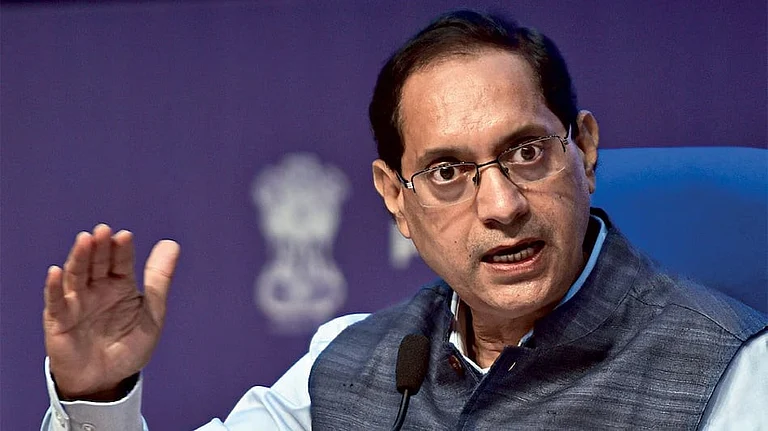What is the economic rationale behind the direct tax changes?
From an economic perspective, we need to restructure the system. With the introduction of a new income-tax Bill, we aim to make the structure more forward-looking. Our tax rates now follow a gradual progression—5%, 10%, 15% and 20%, whereas earlier, there was a steep jump from 20% to 30%. We introduced the 25% slab to smoothen this transition.
The Rs 0–3 lakh slab was fixed long ago. If we revise it to Rs 0–4 lakh, many taxpayers won’t even need to file returns.
This is a structural tax reform, providing a stable framework that doesn’t require annual changes. We believe in giving money back to taxpayers, addressing the perception of excessive taxation. The idea is for people to spend, save and invest, which in turn stimulates the economy.
Isn’t this contrary to the strategy of bringing more people into the tax net?
The key point here is that we recognise the importance of broadening the tax base rather than repeatedly taxing the same individuals. If the government has set an exemption limit of Rs 12 lakh, it reflects a conscious decision not to tax incomes below that threshold.
The focus should be on bringing new taxpayers into the system and ensuring that incomes are rising. This is why we are also indirectly telling corporate to raise wages. When we provide tax benefits to businesses, we also expect them to pass on some of those gains to their employees.
The cost of living is rising and the corporate sector says there is not enough demand…
And I say, you [the corporate sector] should also participate in demand creation by giving more money to your employees or hire more. If you are raising productivity, then wages must also reflect that growth. You can’t say ‘I will increase productivity, but I will not increase wages’.
How will this move encourage the corporate sector to scale up investments when direct benefits in 2019 could not?
We are aiming to stimulate economic activity by seeding new ideas. And these ideas should grow. It’s not just about maintaining our current trajectory—we must also look ahead. This approach is not at the cost of capital expenditure. Instead, we believe that the money returned to taxpayers will generate more economic momentum than if it had remained with the government.
At the same time, we are ensuring fiscal prudence. By reducing the fiscal deficit, we are creating space for the private sector. This is a non-inflationary strategy. We are not artificially stimulating demand but rather boosting consumption while maintaining strong capex growth. The key is how taxpayers respond. If they use this money wisely—spending, saving and investing—it will validate our approach.
Will corporate tax cuts be rolled back if investments don't come?
It is not necessary because they will do it. The key factor is initiative and we see that initiative already in motion. We are encouraging this momentum and as spending picks up, corporate sentiment remains strong.
Why doesn’t the enthusiasm show in numbers? Upper end of taxpayers express disappointment over the quality of life.
It will show up. Many people are sitting on the fence.
The quality of life is improving rapidly—you can see it in better roads, enhanced connectivity and a far more efficient logistics network than a decade ago.
Investments in railways, freight corridors with double-decker trains, faster container movement and the expansion of warehousing, including hub-and-spoke models with India Post, are driving this transformation.
States play a crucial role, particularly in education and health care. Many are making significant investments. Their impact is visible.
What message do the import-duty cuts send?
The policy stance is becoming clearer and the focus is shifting toward efficiency, innovation and competitiveness. Consumer benefits must also be realised. If efficiency-driven cost reductions don’t materialise, people may wrongly blame GST rather than deeper structural issues.
Both industry and government have roles to play. While businesses must enhance productivity, cut costs and adopt new technologies, the government must continue improving ease of doing business, reducing regulatory burdens and strengthening infrastructure.
What of the Atmanirbhar vision of reduced reliance on imports?
Nothing works in isolation today. If India lacks critical minerals, it must import them, and doing so at high duties makes little sense. The success of mobile manufacturing in India came from initially allowing key components to be imported. As domestic production scaled up, dependency on imports reduced.
The same principle applied to India’s auto industry. A phased approach is essential—temporary import flexibility enables local ecosystems to develop.
To support this, India needs a non-inverted duty structure: raw materials should have the lowest duties, intermediates should be moderately taxed and final goods should face the highest tariffs.












